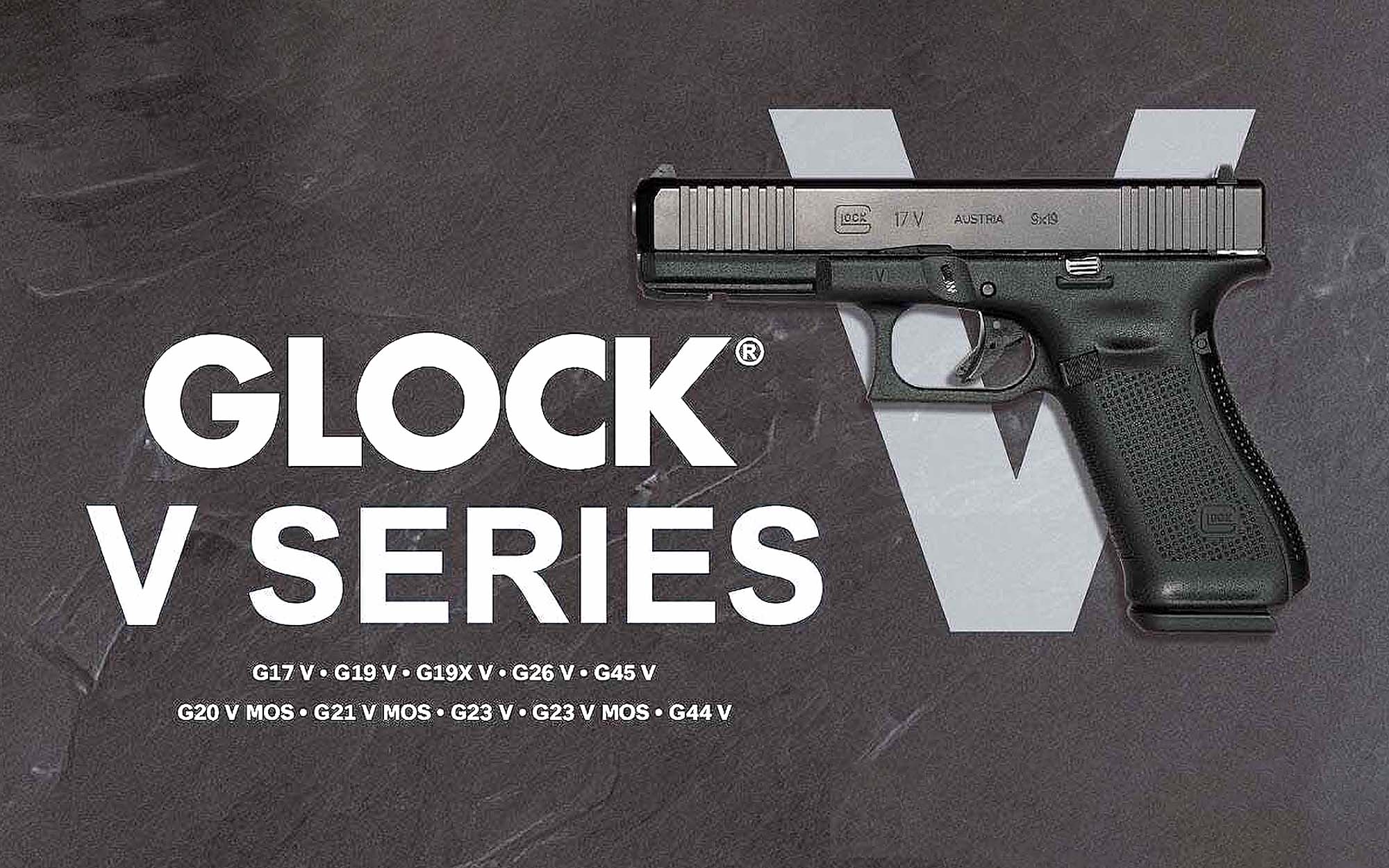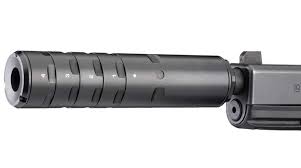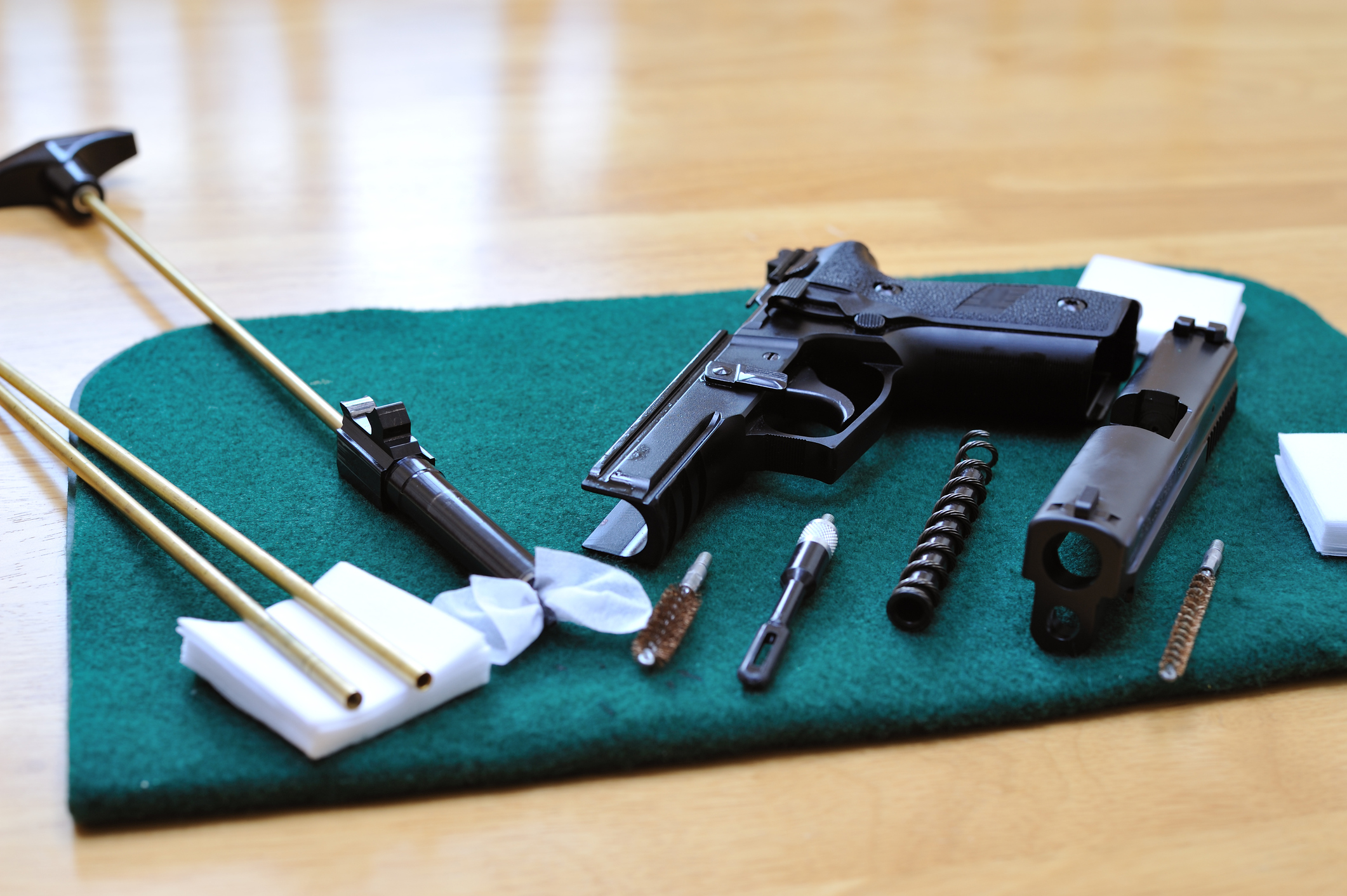Everything You Need To Know Before Buying Your Next Glock!
Welcome to our blog post on understanding and maintaining your Glock 9mm! Whether you are a seasoned gun owner or a first-time buyer, it's crucial to have a comprehensive understanding of your firearm and how to properly care for it. In this post, we will delve into the unique features and specifications of the Glock 9mm, as well as provide step-by-step instructions on cleaning, disassembling, and reassembling your Glock. We will also cover important maintenance practices, advanced usage tips, and troubleshooting common issues. By the end of this post, you will have the knowledge and skills necessary to ensure the longevity and reliability of your Glock 9mm. So, let's dive in and become experts in understanding and maintaining this iconic firearm
In This Article We Discuss
Introduction to Glock 9mm: Unique Features and Specifications
The Glock 9mm is a popular and widely used handgun known for its reliability, durability, and ease of use. Before diving into the maintenance and care aspects, it's important to have a solid understanding of the unique features and specifications that make the Glock 9mm stand out among other firearms.
The Glock Legacy
The Glock brand has a rich history that dates back to the early 1980s when Gaston Glock, an Austrian engineer, introduced the first Glock pistol. Since then, Glock has become a household name in the firearms industry, with their pistols being favored by law enforcement, military personnel, and civilian shooters around the world.
The 9mm Caliber
The Glock 9mm is chambered in the 9x19mm Parabellum cartridge, commonly referred to as the 9mm. This caliber is widely considered to be one of the most versatile and popular handgun calibers in existence. It strikes a balance between manageable recoil, magazine capacity, and stopping power, making it ideal for self-defense, target shooting, and competition.
Polymer Frame Construction
One of the distinguishing features of the Glock 9mm is its polymer frame construction. Unlike traditional handguns that utilize metal frames, Glock pistols incorporate a high-strength polymer frame. This design choice provides several advantages, including reduced weight, improved durability, and enhanced resistance to corrosion and environmental elements.
Striker-Fired Action
The Glock 9mm operates on a striker-fired action mechanism, as opposed to a traditional hammer-fired system. This means that instead of a hammer striking a firing pin, the trigger pull directly releases a pre-loaded striker, resulting in a consistent trigger pull and improved reliability.
Safe Action System
Glock pistols are equipped with a unique Safe Action System, which combines multiple built-in safety features. This system includes the trigger safety, firing pin safety, and drop safety. These safety mechanisms work together to prevent accidental discharges and ensure that the pistol can only be fired when intentionally engaged.
Modular Design and Customization Options
Another impressive aspect of the Glock 9mm is its modular design, which allows for easy customization and adaptability to individual preferences. Glock pistols offer interchangeable backstraps and magazine releases, enabling shooters to adjust the grip size and ergonomics to fit their hand size and shooting style.
Magazine Capacity
Glock 9mm pistols are renowned for their generous magazine capacity. Depending on the specific model and magazine used, Glock handguns typically offer capacities ranging from 10 to 17 rounds, with extended magazines available for even higher capacities. This ample ammunition capacity is advantageous for both self-defense and extended range sessions without frequent reloading.
Sight Options
Glock pistols come with a variety of sight options to suit different shooting needs. The standard sights are typically polymer and feature a white dot configuration, providing a simple and intuitive sight picture. However, Glock also offers models with steel sights, night sights, and the option to upgrade to aftermarket sights, allowing shooters to enhance their accuracy and target acquisition capabilities.
Understanding these unique features and specifications of the Glock 9mm sets the foundation for proper maintenance and care, which we will explore in detail in the following sections. By familiarizing yourself with the inner workings and design choices of your Glock, you'll be better equipped to ensure its optimal performance and longevity.
How to Clean Your Glock 9mm
Properly cleaning your Glock 9mm is essential for maintaining its reliability, accuracy, and overall performance. Regular cleaning helps remove dirt, debris, and fouling that can accumulate during shooting sessions. In this section, we will discuss the importance of regular cleaning, the essential supplies needed, and provide a step-by-step guide on how to clean your Glock 9mm effectively.
0.1 Importance of Regular Cleaning
Regular cleaning is crucial for the proper functioning of your Glock 9mm. Here are a few reasons why cleaning is important:
- Reliability: Cleaning helps ensure that all components of your Glock are in good working order, reducing the chances of malfunctions or misfires.
- Accuracy: A clean barrel and slide promote consistent bullet placement and improve overall accuracy.
- Preventive Maintenance: Regular cleaning allows you to inspect your firearm for any signs of wear, damage, or potential issues that may require further attention.
- Longevity: Proper cleaning helps protect the internal components of your Glock from corrosion and excessive wear, prolonging its lifespan.
0.2 Essential Cleaning Supplies
Before diving into the cleaning process, gather the following essential cleaning supplies:
- Cleaning Solvent: Use a high-quality gun cleaning solvent to remove carbon buildup, dirt, and grime. Popular solvents include Hoppe's No. 9, Ballistol, and CLP (Clean, Lubricate, Protect).
- Bore Brush: A bore brush specifically designed for 9mm pistols is necessary to clean the barrel and remove any fouling.
- Cleaning Rod and Patches: A cleaning rod and cotton patches are used to clean the barrel. Ensure that the cleaning rod is compatible with your Glock's barrel length.
- Nylon Brush: A nylon brush is ideal for scrubbing hard-to-reach areas, such as the slide rails and other intricate parts.
- Microfiber Cloth: Use a soft microfiber cloth to wipe down and remove excess cleaning solvent.
- Toothbrush or Small Brush: A toothbrush or small brush can be helpful for cleaning small parts and crevices.
- Gun Lubricant: After cleaning, apply a gun lubricant to ensure smooth operation of moving parts. Popular options include Slip 2000 EWL, Break-Free CLP, and Lucas Oil Extreme Duty Gun Oil.
- Gloves and Eye Protection: Wearing gloves and eye protection is recommended to protect your hands and eyes from solvent and debris
0.3 Step-by-Step Cleaning Guide
Follow these step-by-step instructions to clean your Glock 9mm thoroughly:
- Safety First: Ensure your Glock is unloaded by removing the magazine and visually inspecting the chamber. Always follow proper safety protocols when handling firearms.
- Field Stripping: Perform a field strip by retracting the slide halfway, pulling down on the takedown lever, and releasing the slide forward. Remove the slide from the frame.
- Cleaning the Barrel: Attach a bore brush to the cleaning rod and saturate it with cleaning solvent. Insert the rod into the chamber end of the barrel and push the brush through the barrel several times. Follow up by running a few clean patches through the barrel until they come out clean.
- Cleaning the Slide: Use a nylon brush and cleaning solvent to scrub the slide, paying attention to the rails, grooves, and small parts. Wipe off excess solvent with a microfiber cloth.
- Cleaning the Frame: Use a nylon brush and cleaning solvent to clean the frame, focusing on areas with visible dirt or fouling. Be thorough but gentle to avoid damaging any components.
- Cleaning Small Parts: Remove any small parts, such as the extractor, firing pin, and slide stop lever, and clean them using a toothbrush or small brush dipped in cleaning solvent. Wipe them dry with a microfiber cloth.
- Final Cleaning and Lubrication: Wipe down all parts with a clean, dry microfiber cloth. Apply a small amount of gun lubricant to the appropriate areas, following the manufacturer's recommendations.
- Reassembly: Reassemble your Glock by aligning the slide with the frame, sliding it back, and engaging the takedown lever. Perform a function check to ensure everything is working correctly.
Regular cleaning is a vital aspect of Glock ownership. By following these steps and dedicating time to clean your Glock 9mm after each use or at regular intervals, you will maintain its performance, reliability, and overall lifespan. Now that you know how to clean your Glock, let's move on to the next section, which covers how to safely disassemble and reassemble your pistol.
How to Safely Disassemble and Reassemble Your Glock 9mm
Knowing how to safely disassemble and reassemble your Glock 9mm is essential for routine maintenance, troubleshooting, and customization. This section will guide you through the process of safely disassembling and reassembling your Glock, ensuring that you can confidently handle and maintain your firearm.
1.1 Signs Your Glock 9mm Needs Disassembly
Before diving into the disassembly process, it's important to know when your Glock may require disassembly. Here are some common signs:
- Excessive fouling: If your Glock is experiencing reliability issues or has excessive fouling in the barrel or slide, it may be time for a thorough cleaning.
- Malfunctions: If your Glock is experiencing consistent malfunctions, such as failure to feed or extract, it may be necessary to inspect and clean the internal components.
- Customization: If you want to customize your Glock with aftermarket parts or accessories, disassembly is often required to install or replace components.
1.2 Tools Needed for Disassembly and Reassembly
Before proceeding, ensure you have the following tools:
- Glock Takedown Tool: The Glock takedown tool, usually provided with your firearm, is a small pin-like tool used to disassemble certain parts.
- Punch Tool Set: A set of punch tools is useful for pushing out pins and disassembling small components.
- Cleaning Rod and Bore Brush: These tools are essential for cleaning the barrel, but they can also assist in disassembly and reassembly.
- Soft Mallet or Hammer: A soft mallet or hammer may be required to tap out pins or aid in separating components.
1.3 Proper Disassembly and Reassembly Techniques
Follow these step-by-step instructions to safely disassemble and reassemble your Glock 9mm:
Disassembly:
- Safety First: Ensure your Glock is unloaded and follow proper safety procedures before proceeding.
- Remove the Slide: Retract the slide slightly, pull down on the takedown lever, and release the slide forward to remove it from the frame.
- Remove the Recoil Spring and Barrel: Push the recoil spring assembly (guide rod) forward, lift it out of the slide, and remove the barrel from the slide.
- Optional: Remove the Slide Cover Plate and Firing Pin Assembly: Use the Glock takedown tool or a punch tool to push down on the firing pin safety. While holding it down, remove the slide cover plate and slowly release the firing pin assembly.
Reassembly:
- Insert the Barrel and Recoil Spring: Place the barrel into the slide with the chambered end facing forward. Insert the recoil spring assembly into the slide, ensuring it is properly seated.
- Align the Slide and Frame: Align the slide with the frame and slide it onto the frame rails. Push the slide all the way back until it locks into place.
- Verify Proper Functioning: Perform a function check to ensure the slide, trigger, and other components are functioning correctly.
- Optional: Reinstall the Slide Cover Plate and Firing Pin Assembly: If you removed the slide cover plate and firing pin assembly, reinstall them by aligning the cover plate and pressing it into place. Ensure the firing pin assembly is properly seated.
Remember to always refer to your Glock owner's manual for specific instructions and guidelines. If you are unsure or uncomfortable with any step of the disassembly or reassembly process, consult a qualified gunsmith for assistance.
Mastering the safe disassembly and reassembly of your Glock 9mm allows for effective cleaning, troubleshooting, and customization. With this knowledge, you are now ready to move on to the next section, which covers essential maintenance practices to keep your Glock in optimal condition.
Ammo For Sale In Stock Fast Shipping - Gunprime
How to Maintain Your Glock 9mm
Properly maintaining your Glock 9mm is crucial to ensure its longevity, reliability, and optimal performance. In this section, we will explore essential maintenance practices that will help you keep your Glock in top condition. We will discuss routine inspection for wear and tear, applying lubricant correctly, safe storage practices, and the principles of safe handling and usage.
2.2 Applying Lubricant Correctly
Proper lubrication is vital for the smooth operation of your Glock 9mm. Here are some guidelines for applying lubricant correctly:
- Use a High-Quality Gun Lubricant: Choose a gun-specific lubricant that is designed to withstand the demands of firearms and provide long-lasting protection against friction and corrosion.
- Apply Lubricant to Key Areas: Focus on applying lubricant to the contact points where metal rubs against metal, such as the slide rails, barrel hood, barrel lug, and trigger components.
- Use a Light Touch: Apply a thin, even layer of lubricant. Avoid over-lubricating, as excess lubricant can attract dirt, debris, and fouling.
- Wipe Off Excess Lubricant: After applying lubricant, use a clean cloth to wipe off any excess. This helps prevent buildup and keeps your Glock clean and functioning properly.
Remember to follow the manufacturer's recommendations for lubrication intervals and the specific lubricant to use. Regularly inspect and reapply lubricant as needed, especially after cleaning or prolonged storage.
2.3 Safe Storage Practices
Proper storage of your Glock 9mm is crucial for maintaining its condition and ensuring safety. Here are some safe storage practices to consider:
- Unload and Store Ammunition Separately: Before storing your Glock, remove the magazine and ensure the chamber is empty. Store ammunition in a separate location away from the firearm.
- Secure in a Locked Container: Store your Glock in a locked container, such as a gun safe, cabinet, or lockable case. This helps prevent unauthorized access and protects against theft.
- Control Humidity and Temperature: Store your Glock in a dry environment with controlled humidity and temperature. Extreme humidity or temperature fluctuations can lead to corrosion and damage.
- Avoid Exposure to Moisture: Keep your Glock away from moisture sources to prevent rust and corrosion. Consider using desiccant packs or dehumidifiers in your storage area.
- Follow Local Laws and Regulations: Familiarize yourself with local laws and regulations regarding firearm storage. Adhere to all legal requirements to ensure compliance and safety.
By following these safe storage practices, you can protect your Glock from damage, unauthorized access, and ensure the safety of those around you.
2.4 Principles of Safe Handling and Usage
Practicing safe handling and usage principles is essential for both your safety and the longevity of your Glock 9mm. Here are some key principles to keep in mind:
- Always Treat Your Glock as if it's Loaded: Regardless of whether you believe your Glock is unloaded, always handle it with the utmost care and treat it as if it's loaded. This helps prevent negligent discharges and promotes responsible firearm handling.
- Keep Your Finger off the Trigger: Only place your finger on the trigger when you are ready to fire. Keep your finger indexed along the frame or slide until you are prepared to shoot.
- Point Your Glock in a Safe Direction: Always ensure that the muzzle of your Glock is pointed in a safe direction, away from yourself and others. Be aware of your surroundings and potential hazards.
- Use Proper Grip and Stance: Maintain a firm grip on your Glock, ensuring both hands are securely holding the firearm. Adopt a stable shooting stance to enhance control and accuracy.
- Know Your Target and What's Beyond: Before firing, always identify your target and be aware of what lies beyond it. This helps prevent unintended damage or injury.
- Keep Your Glock Clean and Well-Maintained: Regularly clean and maintain your Glock to ensure its reliability and proper functioning. A well-maintained firearm is less likely to experience malfunctions or accidents.
By adhering to these principles of safe handling and usage, you can enjoy your Glock 9mm responsibly and safely.
Properly maintaining your Glock is essential for its longevity, reliability, and performance. By following these maintenance practices, you can ensure that your Glock 9mm remains in optimal condition for years to come. In the next section, we will explore advanced Glock 9mm usage, including understanding and adjusting Glock sights, managing recoil, and troubleshooting common issues.
Advanced Glock 9mm Usage
Once you have mastered the basics of understanding and maintaining your Glock 9mm, you may be interested in exploring advanced usage techniques. In this section, we will delve into advanced topics that will further enhance your knowledge and skills with your Glock 9mm.
3.1 Understanding and Adjusting Glock Sights
Glock pistols typically come with standard sights that are functional and reliable. However, some shooters may prefer to upgrade or adjust their sights to better suit their needs. Here are some key points to consider:
- Sight Types: Explore different sight options such as night sights, fiber optic sights, or red dot sights. Each type has its advantages and considerations, including enhanced visibility in low-light conditions or improved target acquisition speed.
- Adjusting Sights: Glock pistols have adjustable rear sights that allow for windage (horizontal) and elevation (vertical) adjustments. Learn how to properly adjust your sights using the appropriate tools and techniques.
- Zeroing Sights: Zeroing your sights means aligning them to ensure accurate bullet placement at a specific distance. Understand the process of zeroing your sights and how to make adjustments based on your shooting preferences and anticipated engagement distances.
By understanding and potentially adjusting your Glock sights, you can improve your accuracy and shooting performance.
3.2 Introduction to Glock Recoil Management
Glock pistols are known for their reliable and manageable recoil. However, understanding and managing recoil can further enhance your shooting experience. Consider the following:
- Proper Grip: A firm and consistent grip on your Glock is crucial for managing recoil. Ensure both hands are securely holding the firearm, with a slightly aggressive grip to maintain control.
- Stance and Body Positioning: Adopting a proper shooting stance, such as the Isosceles or Weaver stance, can help mitigate recoil. Distribute your weight evenly and align your body with the target.
- Follow-Through: Maintain control of your Glock throughout the entire shooting process, including follow-through after each shot. This helps manage recoil and maintain accuracy.
- Training and Practice: Regular practice and training sessions will help you develop techniques to manage recoil effectively. Consider seeking professional instruction or participating in shooting courses to refine your skills.
Understanding and managing recoil will not only improve your shooting performance but also help you maintain control and quickly engage subsequent targets.
3.3 Troubleshooting Common Glock 9mm Issues
Even with regular maintenance, Glock pistols may experience common issues that can affect their performance. Knowing how to troubleshoot these issues can save you time and frustration. Here are some common problems and their possible solutions:
- Failure to Feed or Extract: Ensure your Glock is properly lubricated and that the ammunition you are using is compatible. Inspect the magazine for any obstructions or deformities. Check the extractor for proper functioning.
- Failure to Fire: Verify that your Glock is loaded with ammunition. Check the firing pin and firing pin channel for any obstructions or debris. Ensure the trigger is functioning correctly.
- Slide Not Locking Back: Check the slide stop lever for any obstructions or damage. Ensure you are not inadvertently pressing the slide stop lever during shooting.
- Light Strikes or Misfires: Ensure your Glock is properly lubricated and that you are using quality ammunition. Check the firing pin spring and firing pin channel for any obstructions.
If you encounter persistent issues with your Glock, it is recommended to seek the assistance of a qualified gunsmith or Glock-certified armorer for further diagnosis and repair.
By gaining a deeper understanding of advanced Glock usage, including adjusting sights, managing recoil, and troubleshooting common issues, you can maximize your shooting experience and overcome any challenges that may arise.
In the final section, we will conclude our blog post by emphasizing the importance of maintaining your Glock 9mm to ensure its longevity and reliability.
Conclusion: Ensuring Longevity and Reliability of Your Glock 9mm
In conclusion, understanding and maintaining your Glock 9mm is essential for ensuring its longevity, reliability, and optimal performance. By following the guidelines and practices discussed throughout this blog post, you can confidently handle and care for your Glock, whether you are a seasoned gun owner or a first-time buyer.
We began by exploring the unique features and specifications of the Glock 9mm, understanding its polymer frame construction, striker-fired action, and the Safe Action System. This knowledge provides a solid foundation for proper maintenance and care.
We then delved into the step-by-step process of cleaning your Glock 9mm, emphasizing the importance of regular cleaning, essential cleaning supplies, and the correct cleaning techniques. A clean Glock not only enhances reliability but also promotes accuracy and prevents potential issues.
Next, we discussed how to safely disassemble and reassemble your Glock, providing guidance on when disassembly may be necessary and the tools required for the process. Proper disassembly and reassembly allow for thorough cleaning, troubleshooting, and customization of your Glock.
We then explored essential maintenance practices, including routine inspection for wear and tear, applying lubricant correctly, safe storage practices, and the principles of safe handling and usage. These practices are crucial for maintaining the condition of your Glock and ensuring the safety of yourself and others.
Moving on to advanced Glock usage, we covered topics such as understanding and adjusting Glock sights, managing recoil, and troubleshooting common issues. These advanced techniques further enhance your shooting skills and allow you to overcome any challenges that may arise.
In conclusion, the key to maintaining the longevity and reliability of your Glock 9mm lies in understanding its unique features, regularly cleaning and inspecting it, applying lubricant correctly, safely storing it, practicing safe handling and usage principles, and exploring advanced usage techniques. By implementing these practices, you can enjoy the optimal performance of your Glock for years to come.
Remember to always refer to your Glock owner's manual for specific instructions and guidelines. If you are unsure or uncomfortable with any maintenance or usage procedure, consult a qualified gunsmith or seek professional instruction.
Thank you for joining us on this journey of understanding and maintaining your Glock 9mm. We hope this comprehensive blog post has provided you with valuable insights and knowledge to confidently care for your Glock and ensure its longevity and reliability. Stay safe, practice responsible firearm ownership, and enjoy your Glock 9mm to the fullest.
Enjoy this article? Leave a review below
Here are some Recommendations you may be interested in!
Related articles
An Ultimate Guide to Hunting Rifles
Top Selling Rifle Optics For 2023
The Ultimate Buyer's Guide to Bullpup Rifles & Shotguns for [2023]










